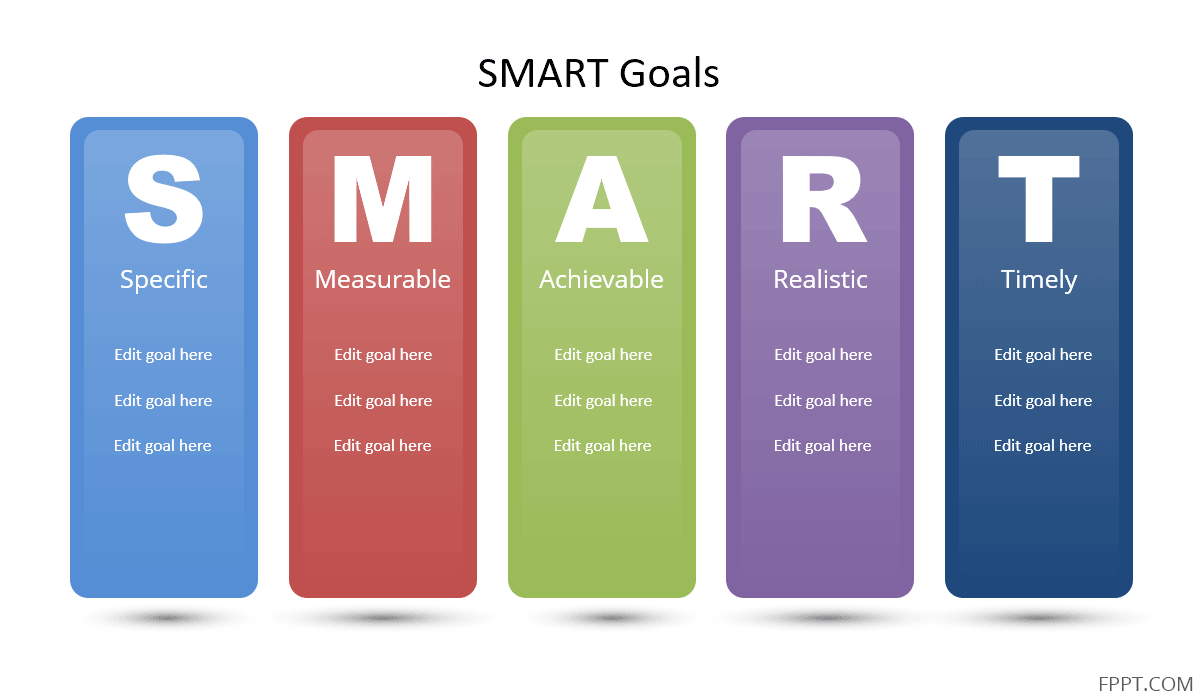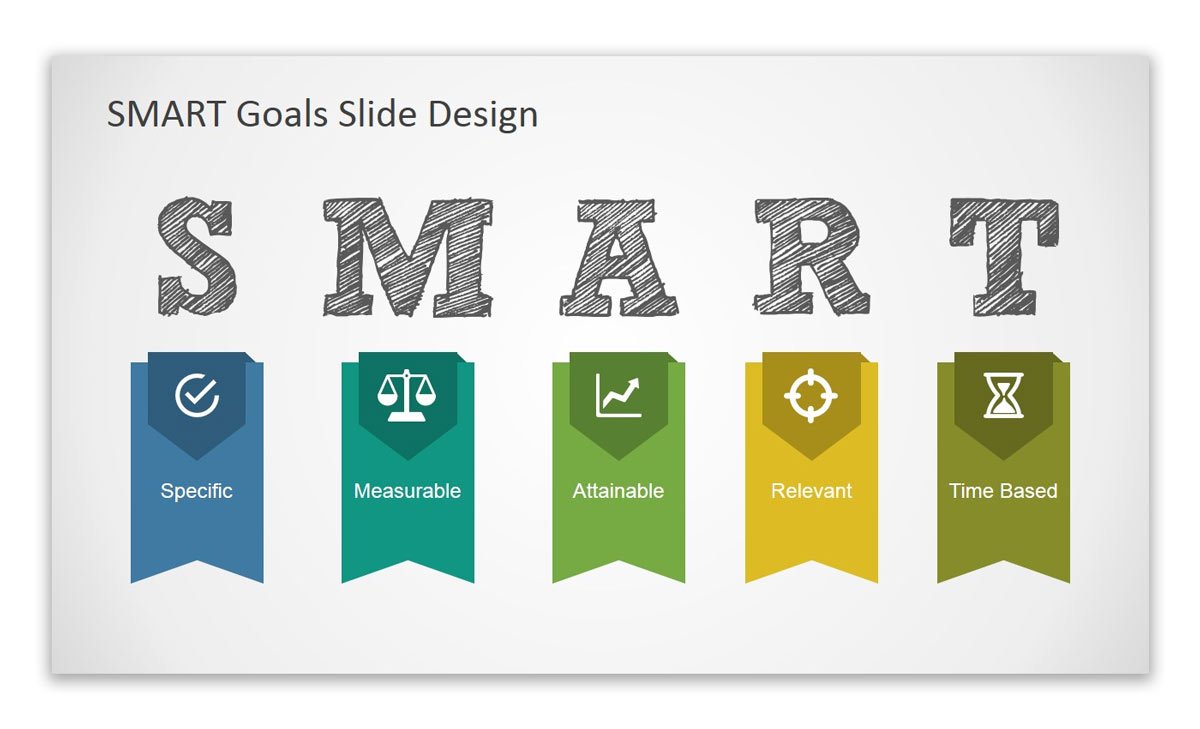What are SMART Goals and How to Use Them
Goal setting is the first step we make towards achieving our plans for our projects, our passions, and our careers. However, being the first step, it is often overlooked and not given enough attention in our path to success. Many of us go and pursue our goals without having a solid foundation of what we’re trying to accomplish in the first place.
Having a SMART goal is a crucial part of planning to put your ideas into words and set them in motion. SMART goals give you the guidance and encouragement you need to focus your efforts towards achieving what you want in your life.
In this article, we’ll explore what SMART is, and we’ll guide you on how to write SMART goals and objectives which you can quickly apply to whatever you are pursuing in life, whether personal or professional.
What are SMART goals?
SMART goal setting is a technique that you can use for guidance to create goals that are clear and attainable. SMART is an acronym for five different qualities that a well-crafted goal must possess. These are:
- Specific
- Measurable
- Achievable
- Relevant
- Time-bound
Following the SMART criteria concretizes your goals and prevents you from making goals that are too vague, trivial, or unrealistic. Let’s explore how you can use SMART to write more effective goals that you will feel empowered to achieve.

Incorporating SMART goals into your personal and professional life can lead to significant improvements in your overall productivity and success. As you learn to create goals that are specific, measurable, achievable, relevant, and time-bound, you’ll find it easier to stay focused and motivated. For more guidance and inspiration on how to effectively apply this powerful technique, check out our comprehensive guide on setting real goals. This resource will provide you with detailed explanations, examples, and actionable steps to help you master the art of SMART goal setting and unlock your full potential.
How to use the SMART Goals criteria
Below we will review the different components included in the SMART methodology and learn how the SMART Goals can be used.
Specific
Your goal should be clear and specific, detailed enough so that you can create a game plan that is fully focused on accomplishing that goal. The narrower you define what your goal is, the better your understanding will be of the steps you’ll need to take to achieve it.
Try to answer the following questions when you’re drafting your SMART goal:
- What objective do I want to accomplish?
- Why do I want to accomplish this?
- How will I reach this objective?
Answering these questions early on sets the foundation for your planning process so you can lay the concrete steps necessary to reach your goals.
Measurable
Once you have the initial skeleton of your game plan, it’s time to concretize it further by adding in the numbers. These numbers are the meat to the bones, and they make it easier to set milestones, track your progress, and know when you’ve reached the finish line.
For example, if your goal is to find a job in the IT industry, how will you know that you’re making progress towards achieving that goal? You can make this goal measurable by setting benchmarks like sending three applications to IT companies every week and going to at least five interviews in a month.
Achievable
Setting goals must always be accompanied by a reality check. Often ask yourself if the plans you’re creating are realistic and within your reach. It’s important to understand your capacities as a person and build your goal within these boundaries. You should also take note of any external factors that may interfere with your path to success.
A good goal is one that is ambitious yet still within your means and capabilities. In other words, it must challenge you and test your abilities, but it should not be beyond what you can exert to the fullest.
Relevant
Your goal must be important and beneficial to you, and it must be aligned with your values and your other goals in life. Achieving this goal must contribute to the fulfillment of your broader, long-term goals.
Some questions you can ask yourself to check whether your goal is relevant are:
- Does it align with my bigger goals in life?
- Is this the right time to pursue this goal?
- Is achieving this goal morally sound to me and to those around me?
- Does it benefit me and others in the short and long term?
Time-bound
The last component of a SMART goal is the deadline. A goal should not last until infinity – it must be constrained by a time limit that you can work towards. Setting an ambitious yet realistic deadline encourages you to focus and concentrate on pursuing that goal within the given time frame.
Having a time limit is another way of measuring your progress. It gives you a finish line to when your goal must have been reached under optimal circumstances.
If you weren’t able to achieve the goal within the time frame, it may have been too ambitious, the duration may be too short, or you may have encountered some barriers along the way. In any case, you can learn from the experience and apply it to goals you will set in the future.
How to write a SMART goal
Let’s apply the SMART technique to transform a vague goal into something more concrete. Notice how the goal improves and becomes clearer and fully formed at each step.
I want to have a job in the IT industry.
- Specific – I want to have a job as a software developer in a startup IT company.
- Measurable – I will apply to three open software developer positions in startup IT companies.
- Achievable – I will apply to three open software developer positions in startup IT companies that hire fresh graduates.
- Relevant – In order to start my career in IT, I will apply to three open software developer positions in startup IT companies that hire fresh graduates.
- Time-bound – In order to start my career in IT, this week, I will apply to three open software developer positions in startup IT companies that hire fresh graduates.
Using the SMART technique, you have now built a solid framework of what you want to achieve, why you want to achieve it, and how you’re going to pursue this objective.
Points to remember
Use SMART with flexibility
Following the SMART criteria is a proven way of creating attainable goals that will lead to your success no matter what project or passion you’re pursuing. It is easy to use and it equips you with the clarity and the motivation to empower you to reach those goals.

However, strictly following SMART can also come with drawbacks. The SMART technique does not cover flexibility which is equally important when making goals, especially long-term ones.
There will be several times when things don’t go as planned and are completely out of your control. Or maybe a better opportunity comes along that will require you to change those goals accordingly. In situations like these, flexibility is necessary so you can easily adapt to changes in the plan without veering away from the end goal.
Remember that a SMART plan only serves as a framework, and you should allow enough legroom to account for changes, barriers, and other external factors that you will surely encounter when you’re putting that plan into action.
Have everyone on board with your SMART plan
When you’re working with a team in achieving your goals, one more thing to consider is making sure that everyone understands and approves of your plan. Your SMART goals must be presented clearly and concisely so that you and your team can easily discuss the plan and smoothen out any creases.

Source: SMART Diagram PowerPoint template by SlideModel
Using a well-designed SMART goals presentation is key to effortlessly share your plan with the team and foster a productive discussion towards attaining those goals.
In summary
The SMART technique is an effective, easy-to-use method to guide you when you’re writing goals, whether it’s personal or professional. Through this technique, your previous vague and unrealistic goals can be transformed into SMART goals that will pave the way for your success.
We will send you our curated collections to your email weekly. No spam, promise!
